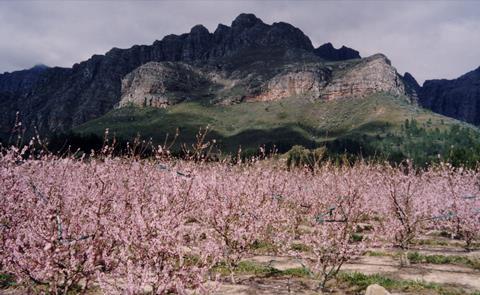A new season brings hope to South African stonefruit growers for improved export volumes compared to last year
Few people will make firm predictions of South African stonefruit volumes as early as the end of September, but there are encouraging signs for a crop that should exceed last year’s export harvest total.

There are some 851 stonefruit growers registered with industry body Hortgro in South Africa and annual exports have a value of R3.85bn.
In total, 82 per cent of the crop is exported as fresh fruit, making the industry very reliant on the export sector.
Industry leaders have said there are positive signs for a crop which will exceed last years export harvest.
After an initially warmer winter, very cold weather was recorded in July, which is normally an indication of a good harvest to come. Exporters, however, warned that cold weather in the late winter and early Spring, may have affected the early season crop.
The plum and nectarine categories are expected to return to pre-2024 volumes – mainly due to new orchards having reached production maturity.
Since 2019 plum plantings have shown modest growth of only 3.4 per cent, according to Hortgro’s recent crop survey.
Nectarine plantings have in the same period increased by 374 per cent, making it the fastest growing South African stonefruit category. Plantings of peaches have declined during the same period by 43 per cent and apricots by 21 per cent.
“This season the plum and nectarine sectors will again dominate exports and are increasingly the categories playing the leading roles in South African stonefruit,” said one exporter.
Although it is early, there is a quiet confidence within the industry.
“There has generally been a good blossom and fruit set – particularly as far as mid- to late season cultivars are concerned,” noted Stems’ Annelie Hauman. “With bigger harvests fruit size may come under pressure and we are therefore encouraging our growers to thin their fruit very well.”
The South Africans will again focus on the EU and the UK when it comes to plums and nectarines, but they are also excited about opportunities in the US.
“There is a commitment in the industry to focus our efforts in the USA on varieties that can handle the tough phytosanitary requirements applying there,” said Hauman.
The South African industry is also in the final stage of negotiating access for its stonefruit to China, which, if realised this season, should also bring new opportunities in international market penetration.
A Chinese delegation will visit South Africa in October to review the proposed export protocols, and it is hoped that this season will see the first shipments to the Chinese market.
Exporters are warning, however, that China requires products of excellent eating quality and price levels differ substantially for good and mediocre fruit.
In total the South Africans believe that they can further grow their footprint in traditional markets this season, but that new access opportunities are important for long-term success.



